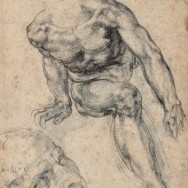Do the changes last?

A great deal of muscular tension exists due to what is inaccurately labeled as “poor posture”. I say this because the word posture implies a choice, but the underlying cause is actually poor structure. In other words, although a person can opt to “stand up straight” such a choice is not always easy—it very quickly causes the lower back to ache, and takes a lot of energy to maintain. Years of sitting in a slouch have shortened the fascial planes along the front of the body so that a forward head, rounded shoulders and shallow breathing are no longer a postural issue but a structural one—the body’s current form. Form determines function. With rounded shoulders, overhead movements cause strain, and, over time, pain. When the body’s form is ill-aligned, function suffers.
Rolfing is a system of sussing out constraints in the mercifully protean fascial network, and, using a variety of manual and movement-based approaches, restore it to appropriate span. In this way, areas which were out of sync with the rest of the body become re-integrated, and a more fluid way of moving becomes possible.
Function determines form. As softer, more rarified movements replace brusque, clumsier efforts, bodily awareness expands, and detrimental habits –perpetuating factors of pain– can be shed.


